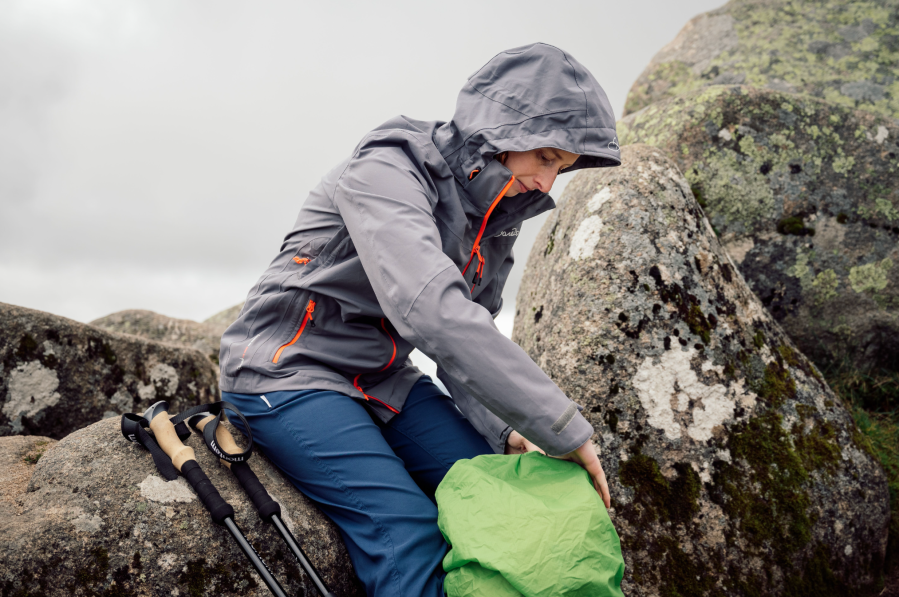We’ve all been there. You’ve spent a lot of money on a waterproof jacket advertised as guaranteed to keep you dry. And, no two ways to slice it, you’re not dry. Maybe the rain’s been hammering down for hours and you’re convinced that it’s coming through the fabric. Maybe you’re climbing through mist and it feels like you’re wearing a plastic bag. Either way, you’re wondering what to blame – your gear or yourself. Whether your gear is old or new, there are a few simple tactics you can use to tip the odds in your favour and learn how to stay dry when hiking – if you keep expectations realistic.
How to stay dry when hiking
A reality check
Outdoor gear is designed to work within a limited range of conditions. Design is a compromise between numerous factors including performance, price, sustainability, and durability. No jacket ever invented will keep you 100% dry 100% of the time. It’s a fact that sometimes you’re going to feel wetter than you’d like. The sooner you learn to accept this the happier you’ll be!
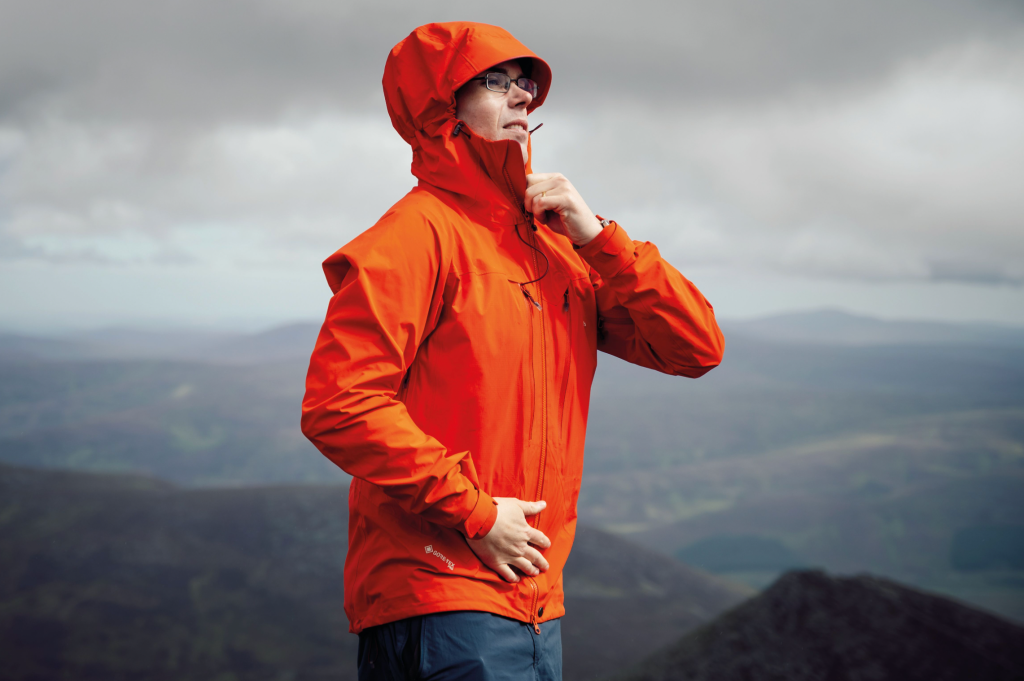
A peaked hood is essential for hill use. Credit: Hannah Roddie
Why you’re getting wet
When you’re slogging uphill and feeling wet, chances are that your waterproof jacket has just ‘wet out’ – it probably isn’t leaking. A jacket must not only shield you from the elements; it must also allow sweat to escape, otherwise it will saturate your layers and you’ll end up feeling wet and cold.
Most waterproofs use a breathable membrane designed to allow water vapour to escape. Millions of tiny pores let water vapour pass, but block liquid water. So, if it’s raining and the membrane is saturated, it will no longer breathe. An outer layer, treated with a Durable Water Repellant (DWR) coating, causes water to ‘bead’ and roll off. This helps to ensure that the membrane keeps breathing even in the rain. But DWR gets less effective over time due to wear and dirt.
This system works best when the air is not too humid and the outer fabric gets the chance to dry off. It can fail during incessant rain in humid conditions and/or when the hiker is working hard. In other words, typical British conditions!

A freshly washed and proofed waterproof jacket beading as it should. Credit: Alex Roddie
How to stay dry when hiking on the hill
Anticipate the weather
The simplest way to stay dry? Avoid the rain! Use mountain weather forecasts (mwis.org.uk) to get an accurate picture of your day, and consider changing your objective if it looks drier elsewhere.
Be observant while hiking. Rain is often visible as it sweeps in, but can be highly localised; an awareness of wind direction and speed helps. Learn to get a feel for whether the rain is about to set in or will fizzle out after a few spots. The knack is to don waterproofs at the right moment to avoid getting wet. If in doubt, err on the side of caution – especially if it’s windy and cold. Don’t just tough it out. You won’t get a medal for being the last one to put your overtrousers on if it’s chucking it down.
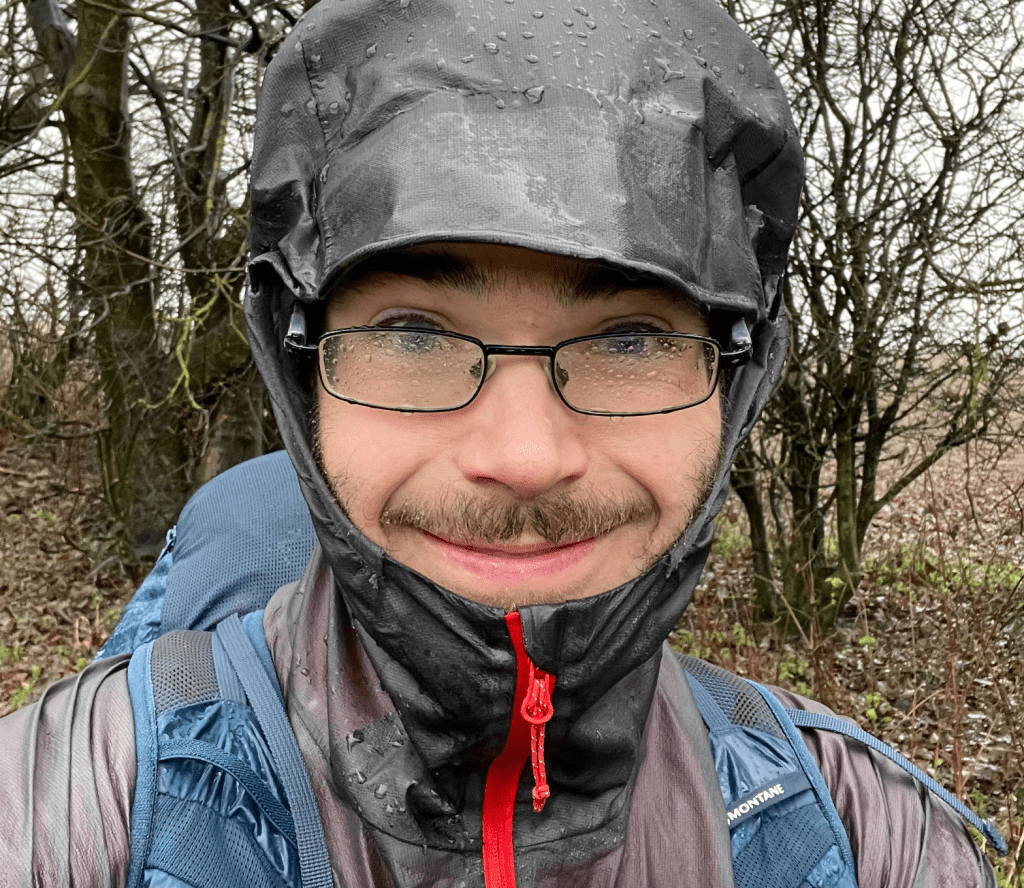
After wetting out, a jacket is saturated and can no longer breathe. Credit: Alex Roddie
Layer wisely
The key to comfort is temperature regulation and keeping moisture away from your skin as much as possible, and it’s easier to achieve this with multiple thin layers. A breathable base layer will wick liquid water away from your skin, helping to keep you as dry as possible. Avoid cotton.
A mid-layer is worth carrying at all times of year. Even in summer, a blustery day can feel chilly. Thin fleece works best in the warmer months – especially grid fleece, which is more breathable. In cold and damp conditions, fleece acts as a moisture buffer to keep condensation away from your skin for longer.
In winter, I prefer two mid-layers: thin grid fleece below, and a warmer, lightweight synthetic garment as needed. A hooded fleece can feel luxurious when it’s cold. However, beware excessive hood bulk; avoid wearing a hooded base layer as well.
Be bold, start cold! You’ll warm up quickly hiking uphill. Do everything you can to avoid overheating as this will make you sweat more. But when you stop, pop a layer on to retain warmth. You’ll cool down quickly.
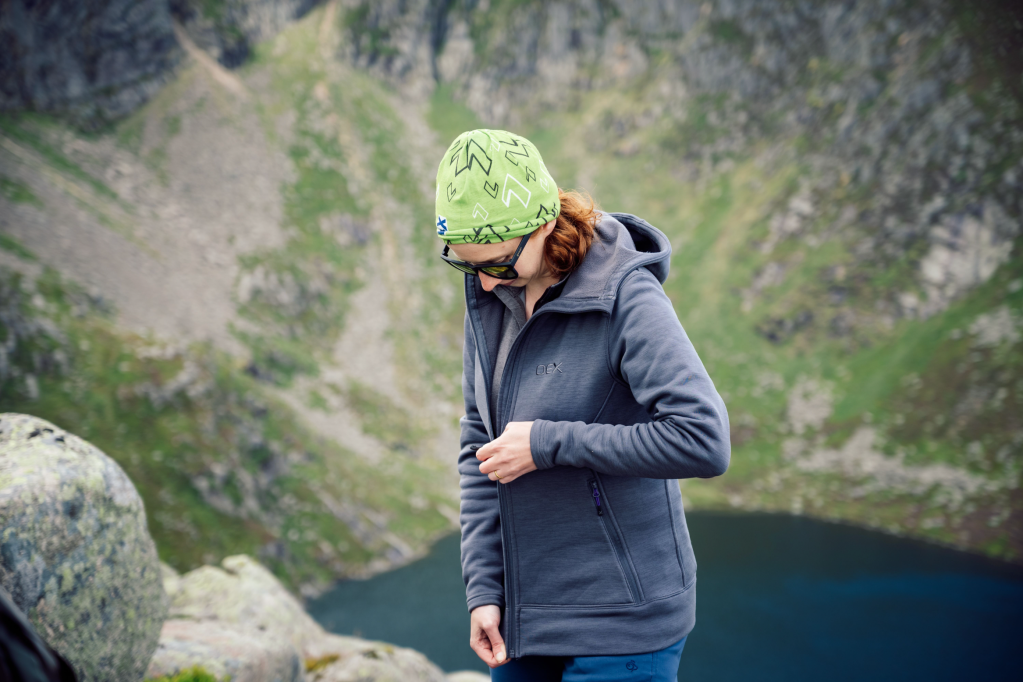
Layers are important for a comfortable and dry-ish hike. Credit: Alex Roddie
Keep spare kit dry
Keep spare layers in dry bags. They also help you to keep things organised – especially useful in winter. Consider popping your insulated jacket in a dry bag near the top of your pack for quick deployment on rest stops.
A pack cover can act as a useful first line of defence in really wet conditions. It will also help keep loose items in your pack lid dry. However, it can catch the wind, and makes it less easy to access water bottles without taking your pack off.
On multi-day walks, condensation is a fact of life. Keep your spare layers in dry bags and away from tent walls. Avoid packing your tent away wet if you can, and take every opportunity to air and dry kit.
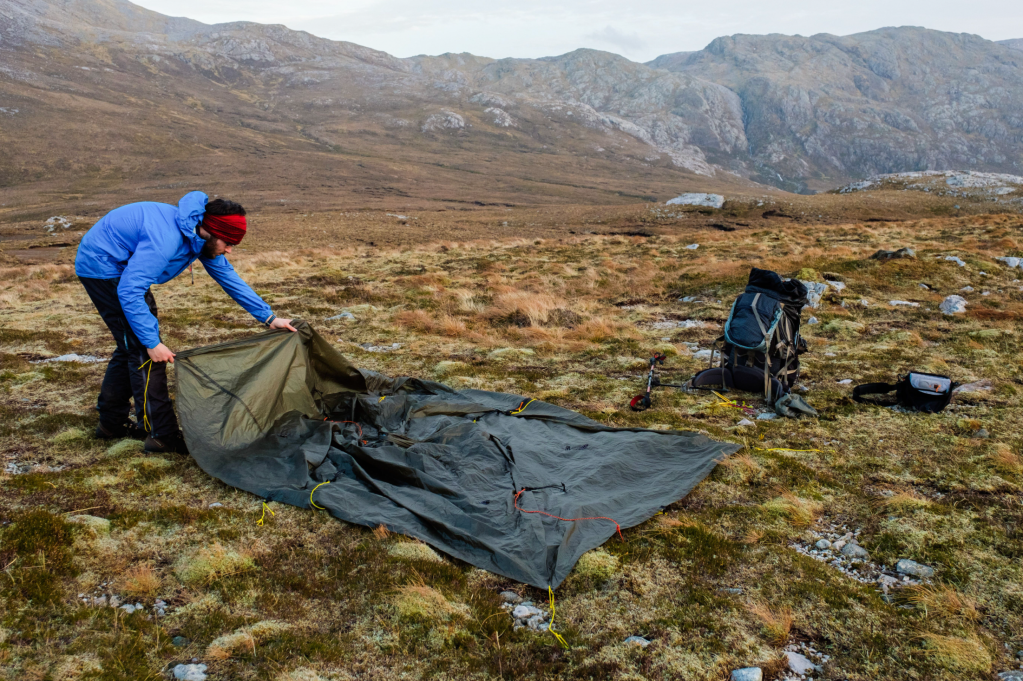
When backpacking, take every opportunity to air and dry your gear. Credit: Alex Roddie
Look after gear
Cleaning
If your jacket is more than a few months old and has seen regular use, it’s probably time for a wash. Washing will sometimes be enough to replenish your jacket’s performance without needing to reproof it. Don’t forget your overtrousers! These tend to get much dirtier than jackets.
Use a product designed specifically for waterproof/breathable outdoor gear, such as Nikwax Tech Wash or Grangers Performance Wash.
Don’t just follow the instructions on the cleaning product; also consult the garment’s care label.
Machine washing is generally fine, but clean out any residual cleaning products (some can be harmful to breathable membranes). If in doubt, hand wash with warm water in a tub.
If possible, tumble-dry the jacket on a low setting; this will help to restore the DWR after washing.

In some conditions, staying dry is simply impossible. Credit: Alex Roddie
When to reproof
If washing and tumble-drying alone fails to restore breathability, it’s time to reproof. Use a product such as Nikwax TX.Direct or Grangers Performance Repel Plus. Never use a product designed for non-breathable gear such as tent flysheets.
Some products are designed to be washed in using a washing machine, while others come in a spray bottle. Again, follow the instructions. Spray-on proofing should be left to drip dry, mopping up any residue with a towel.
Reproofing isn’t permanent; you’ll need to wash and reproof again after a few weeks or months, depending on how you much you use your garments.
Read more: Keep cool and stay safe on hot days in the mountains with tips from IML Mike Raine

